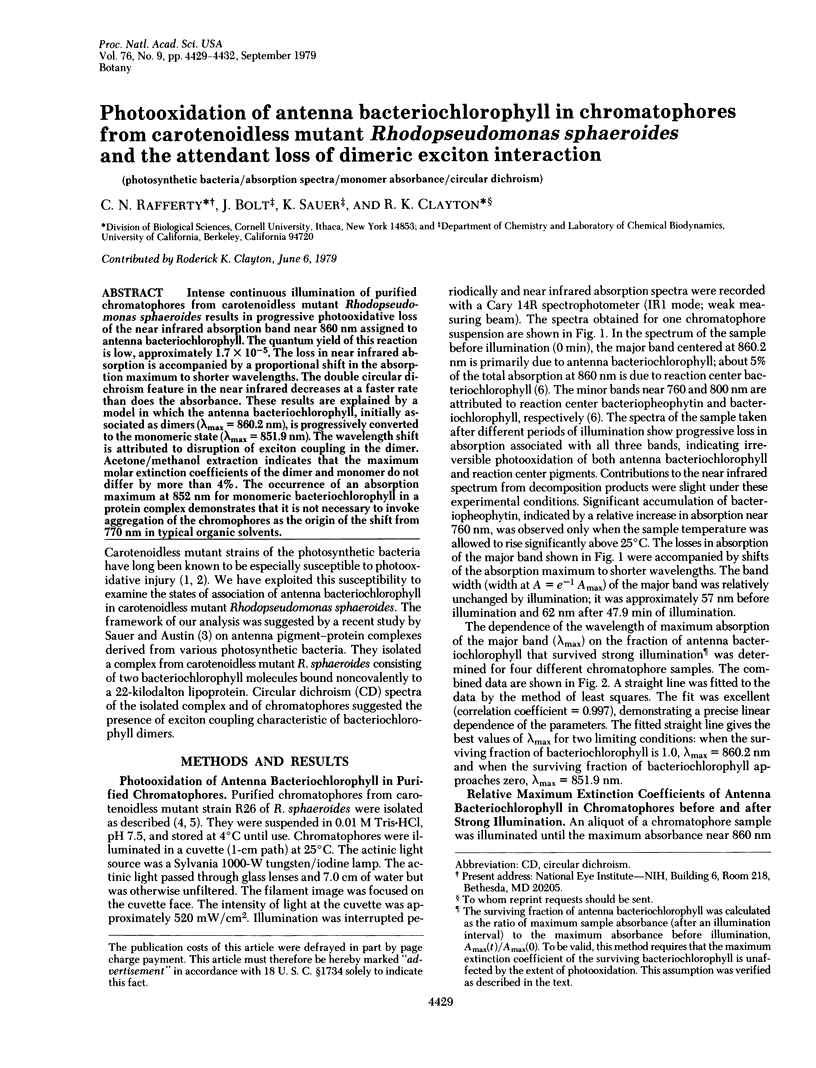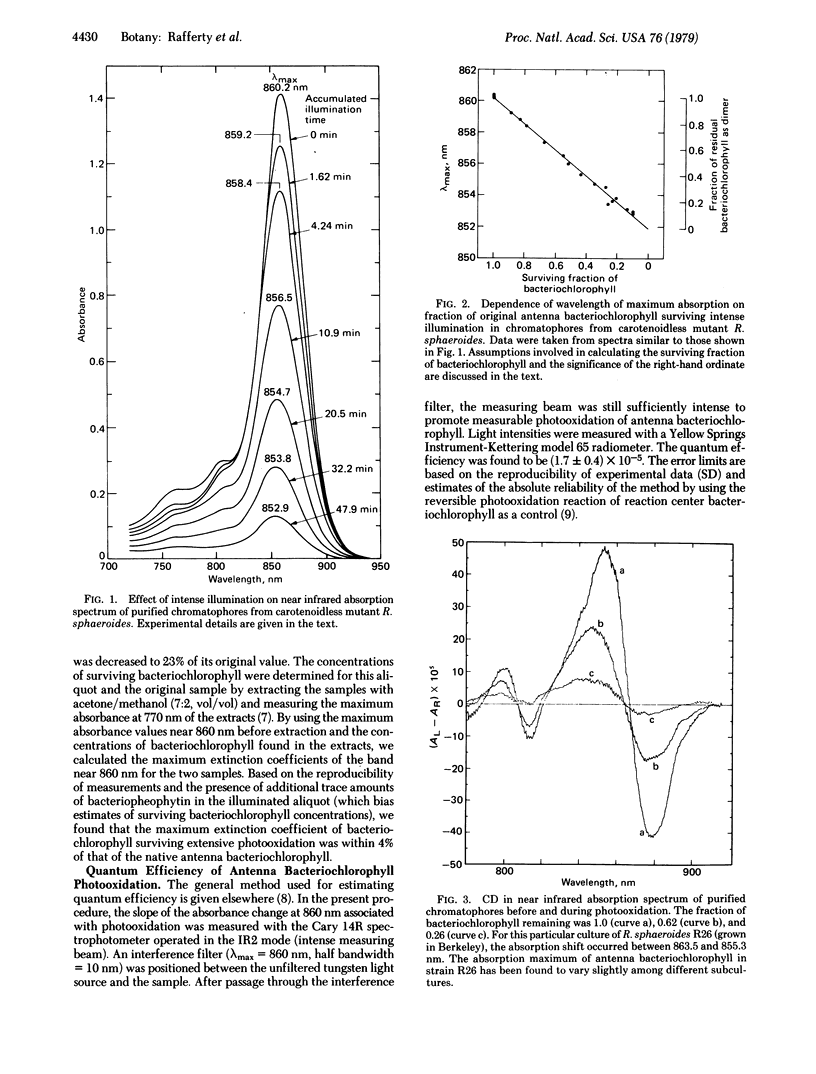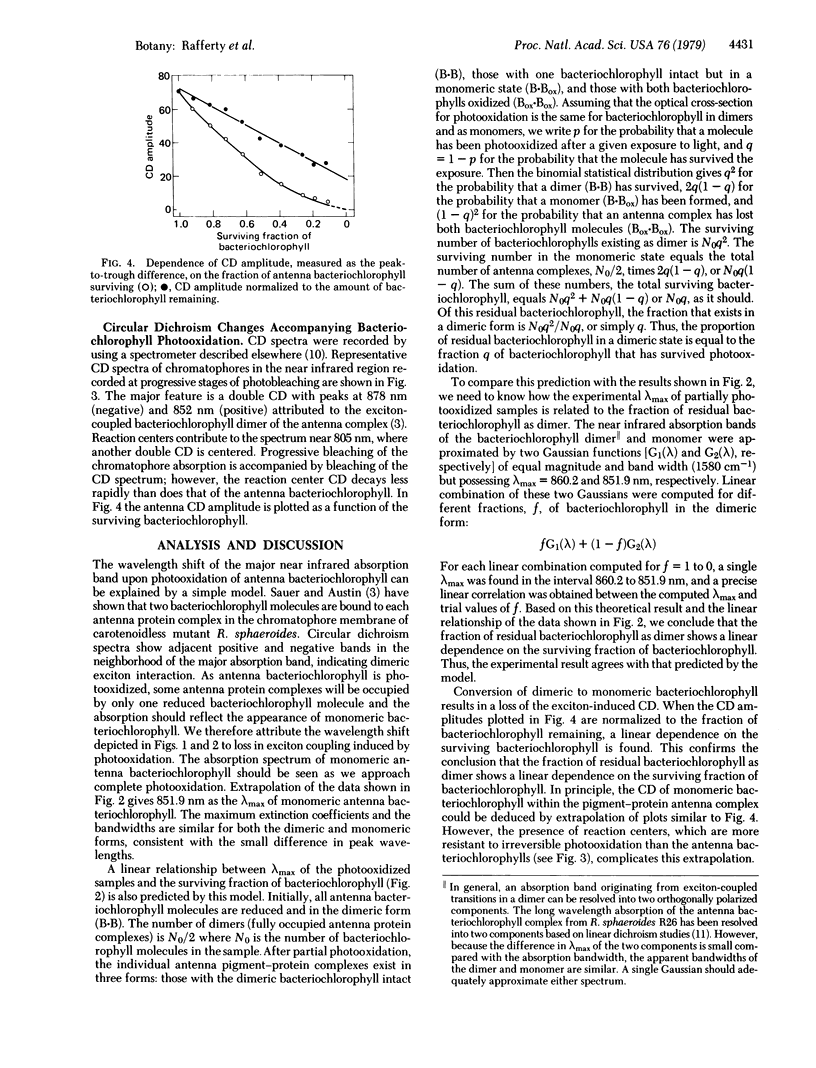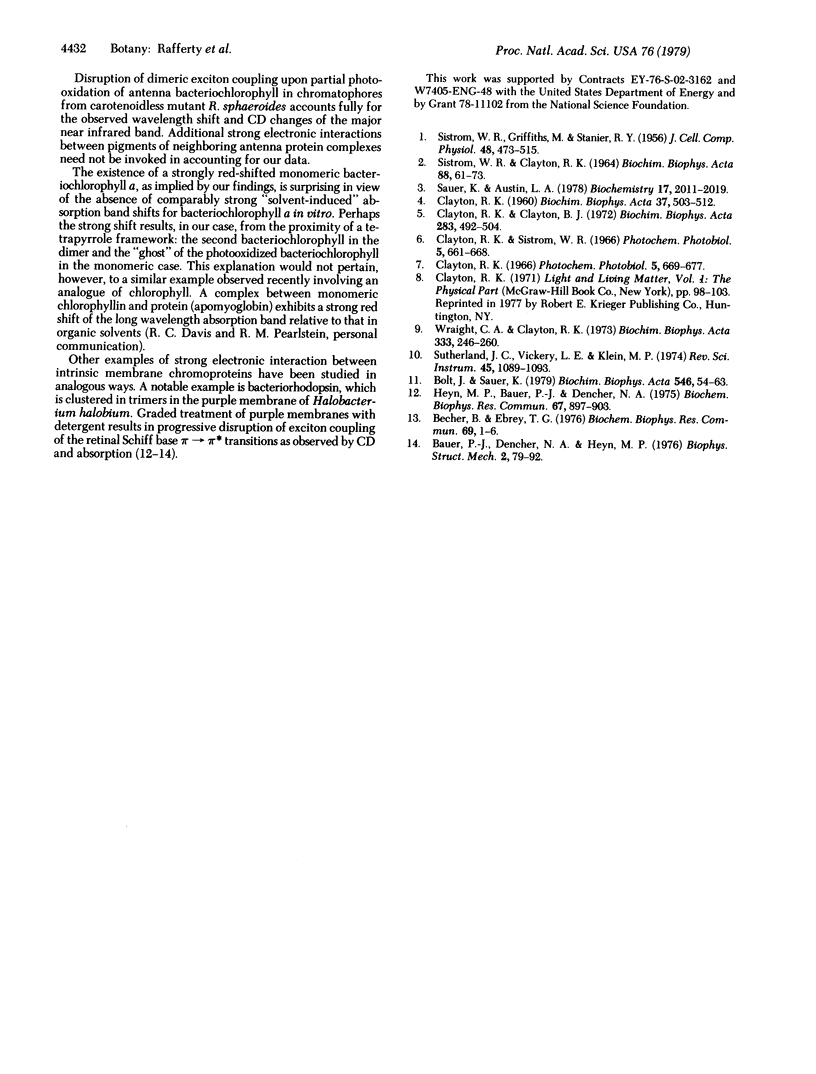Abstract
Intense continuous illumination of purified chromatophores from carotenoidless mutant Rhodopseudomonas sphaeroides results in progressive photooxidative loss of the near infrared absorption band near 860 nm assigned to antenna bacteriochlorophyll. The quantum yield of this reaction is low, approximately 1.7 × 10-5. The loss in near infrared absorption is accompanied by a proportional shift in the absorption maximum to shorter wavelengths. The double circular dichroism feature in the near infrared decreases at a faster rate than does the absorbance. These results are explained by a model in which the antenna bacteriochlorophyll, initially associated as dimers (λmax = 860.2 nm), is progressively converted to the monomeric state (λmax = 851.9 nm). The wavelength shift is attributed to disruption of exciton coupling in the dimer. Acetone/methanol extraction indicates that the maximum molar extinction coefficients of the dimer and monomer do not differ by more than 4%. The occurrence of an absorption maximum at 852 nm for monomeric bacteriochlorophyll in a protein complex demonstrates that it is not necessary to invoke aggregation of the chromophores as the origin of the shift from 770 nm in typical organic solvents.
Keywords: photosynthetic bacteria, absorption spectra, monomer absorbance, circular dichroism
Full text
PDF



Selected References
These references are in PubMed. This may not be the complete list of references from this article.
- Bauer P. J., Dencher N. A., Heyn M. P. Evidence for chromophore-chromophore interactions in the purple membrane from reconstitution experiments of the chromophore-free membrane. Biophys Struct Mech. 1976 Apr 15;2(1):79–92. doi: 10.1007/BF00535654. [DOI] [PubMed] [Google Scholar]
- Becher B., Ebrey T. G. Evidence for chromophore-chromophore (exciton) interaction in the purple membrane of Halobacterium halobium. Biochem Biophys Res Commun. 1976 Mar 8;69(1):1–6. doi: 10.1016/s0006-291x(76)80263-x. [DOI] [PubMed] [Google Scholar]
- Bolt J., Sauer K. Linear dichroism of light harvesting bacteriochlorophyll proteins from Rhodopseudomonas sphaeroides in stretched polyvinyl alcohol films. Biochim Biophys Acta. 1979 Apr 11;546(1):54–63. doi: 10.1016/0005-2728(79)90169-5. [DOI] [PubMed] [Google Scholar]
- CLAYTON R. K. The induced synthesis of catalase in Rhodopseudomonas spheroides. Biochim Biophys Acta. 1960 Jan 29;37:503–512. doi: 10.1016/0006-3002(60)90507-2. [DOI] [PubMed] [Google Scholar]
- Clayton R. K., Clayton B. J. Relations between pigments and proteins in the photosynthetic membranes of Rhodopseudomonas spheroides. Biochim Biophys Acta. 1972 Dec 14;283(3):492–504. doi: 10.1016/0005-2728(72)90265-4. [DOI] [PubMed] [Google Scholar]
- Heyn M. P., Bauer P. J., Dencher N. A. A natural CD label to probe the structure of the purple membrane from Halobacterium halobium by means of exciton coupling effects. Biochem Biophys Res Commun. 1975 Dec 1;67(3):897–903. doi: 10.1016/0006-291x(75)90761-5. [DOI] [PubMed] [Google Scholar]
- SISTROM W. R., CLAYTON R. K. STUDIES ON A MUTANT OF RHODOPSEUDOMONAS SPHEROIDES UNABLE TO GROW PHOTOSYNTHETICALLY. Biochim Biophys Acta. 1964 Jul 29;88:61–73. doi: 10.1016/0926-6577(64)90154-8. [DOI] [PubMed] [Google Scholar]
- SISTROM W. R., GRIFFITHS M., STANIER R. Y. The biology of photosynthetic bacterium which lacks colored carotenoids. J Cell Physiol. 1956 Dec;48(3):473–515. doi: 10.1002/jcp.1030480309. [DOI] [PubMed] [Google Scholar]
- Sauer K., Austin L. A. Bacteriochlorophyll-protein complexes from the light-harvesting antenna of photosynthetic bacteria. Biochemistry. 1978 May 16;17(10):2011–2019. doi: 10.1021/bi00603a033. [DOI] [PubMed] [Google Scholar]


